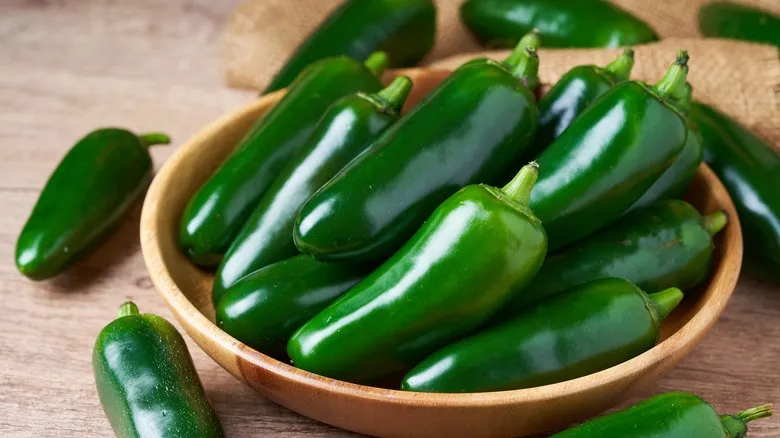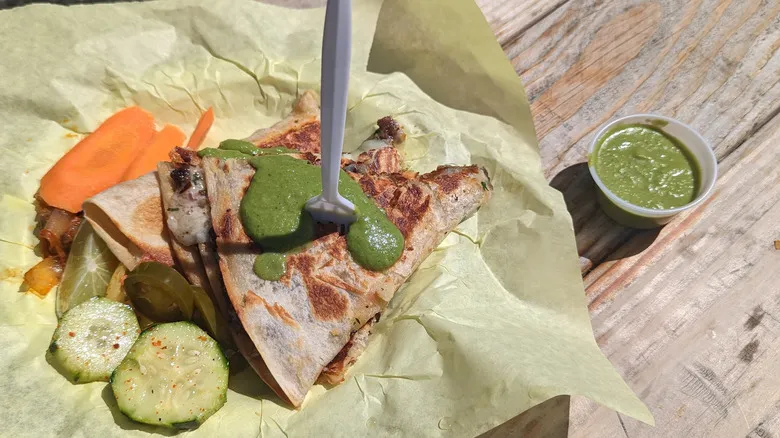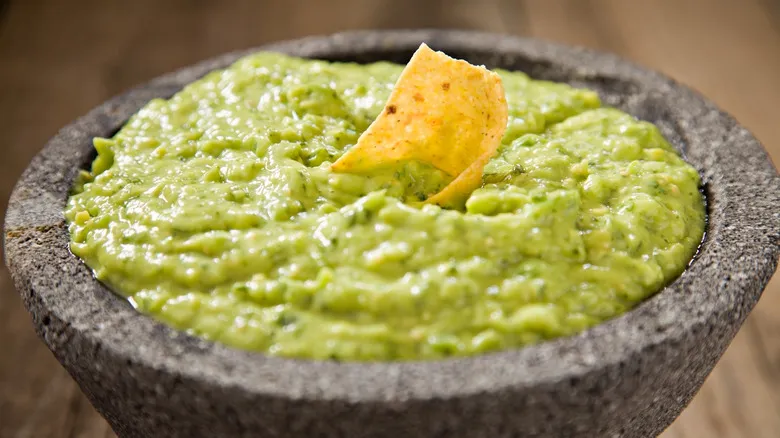History of guacachile

It is thought that guacachile originated in Oaxaca, a southern Mexican state known for its remarkable variety of chiles. Like guacamole, the term guacachile has roots in Nahuatl, the language of the Aztecs; ahuacamolli is the Nahuatl term for guacamole, which translates to "avocado sauce." While guacamole's history dates back hundreds of years to pre-Hispanic Mesoamerica, guacachile is a more contemporary invention. The exact timing of its emergence is uncertain, but it is believed to have been created in response to the rising cost of avocados. In 2009, avocado prices surged due to one of the lowest yields in two decades.
Mexican restaurants and taquerias typically provide salsa for free with chips or meals. However, given the high cost of avocados, making a salsa with them and not charging customers is not the most financially viable option for eateries. Thus, guacachile serves as a practical solution for restaurants to continue offering complimentary salsa. Today, guacachile is commonly found in taquerias, taco stands, and Mexican restaurants across both Mexico and the United States.
Tacos are the most popular dish to pair with guacachile, and it complements many other Mexican foods such as sopes, quesadillas, and chilaquiles. The smooth, spicy salsa also enhances grilled items like vegetables and burgers. Additionally, it makes a delicious dip for fried snacks like taquitos, fried empanadas, and French fries.
Variations of guacachile

Like many salsas and guacamole, there’s plenty of room for creativity in the classic guacachile. Start by considering the level of heat. Jalapeños are fairly mild, providing a gentle kick if used as the base for your guacachile. To amp up the spice while preserving that vibrant green hue, opt for serrano peppers, which can be two to five times hotter than jalapeños. Alternatively, you can mix equal parts jalapeño and serrano for a medium heat, depending on your spice preference.
In Mexico, a popular addition to guacachile is zucchini; while white zucchini is commonly used, green zucchini works just as well. The zucchini is typically boiled or sautéed before being blended with the other ingredients to create a thicker, creamier texture. Incorporating ingredients like cilantro (using the stems for a more robust flavor) and lime can elevate the fresh, cool notes of the salsa, similar to what you’d find in guacamole. You can also add tomatillos to bring the texture closer to that of a traditional salsa verde.
Vegetable oil is usually the go-to for guacachile because of its neutral taste, but you can also use avocado oil or olive oil. Fresh avocado oil will largely retain a neutral flavor with a hint of nuttiness, while olive oil will introduce grassy undertones.
Recommended

Why The Flavor Of Blue Moon Ice Cream Is Still A Mystery

The Folklore Behind Stroopwafel, The Netherlands' Most Iconic Treat

The Mysterious History Of Vietnamese Pho

13 Iconic Dishes That Were Actually Invented In America
Next up

